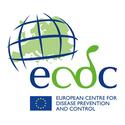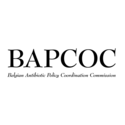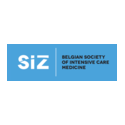In short
During a hospital stay, a patient may get an infection, also known as a nosocomial infection. These infections make the healing process more difficult, which can mean that the patient has to stay in hospital longer. To help prevent infections acquired in intensive care units, Sciensano is organizing a national surveillance system. This enables hospitals to organize the monitoring of these infections within their intensive care department, with monitoring also guaranteed at national level. In this way, Sciensano can make recommendations to healthcare professionals and advise on policy to prevent this type of nosocomial infections.
Project description
A surveillance protocol that charts both the Belgian and the European situation.
The surveillance of nosocomial infections (NI) in intensive care units (ICUs) was launched in 1996 in collaboration with the Belgian Society of Intensive Care Medicine. The current protocol for the surveillance of NI in ICUs emerged from the Helics cooperation arrangement (Hospitals in Europe Link for Infection Control through Surveillance). It was designed to meet the requirements of the European Parliament Decision 2119/98/EC.
In 2003, a European Helics/Intensive Care Unit surveillance protocol was drawn up, which was adapted to the Belgian situation. In this way, surveillance data on nosocomial infections in ICUs that are collected on a national level are also collated and analyzed at European level. Since 2008, this has been done by the European Center for Disease Prevention and Control (ECDC).
Hospitals, policy-makers and (international) researchers are helping to improve the situation
The surveillance of NIs in ICUs is in line with all quality assurance activities. This surveillance helps to reduce the incidence of nosocomial infections in ICUs in Belgian acute hospitals, because we:
- measure the scope of a nosocomial problem
- and identify the domains where preventive action is required.
In this way, the surveillance contributes to the essential elements of an efficient infection prevention program in hospitals, as demonstrated in the Senic Study (Haley, Culver, et al.,1985).
In addition, thanks to this surveillance, we can:
- standardize data collection and analysis by providing the necessary definitions and regulations to the participating hospitals
- let participating hospitals track their own results over time and compare these with other hospitals. Although the current set up does not really make it possible to make reliable comparisons between hospitals, we can still identify extreme outliers in both a positive and a negative sense
- chart the epidemiological situation with regard to hospital infections and the main risk factors associated with this and the consequences in our country (including the identification of nosocomial pathogens, antibiotic resistance) and will eventually track their development over time
- monitor and describe the epidemiology of nosocomial infections in ICUs in the European Union.
Participating in the national surveillance of infections acquired in intensive care, as a hospital.
As a hospital, can I take part in this surveillance?
Yes, in principle, any Belgian hospital can participate voluntarily each year, as long as it:
- has an intensive care unit where intensive monitoring and/or care is provided for patients in a severe of critical clinical condition. If your hospital has several intensive care units, each of these units can participate on an independent basis.
- uses the definitions as specified in the NSIH-ICU protocols ‘Surveillance of Nosocomial Infections in Intensive Care Units’ (NL, FR).
- records the surveillance data over one or more 3-month surveillance periods via Sciensano’s NSIHwin software (which can be requested from the contact person) or via self-created surveillance files according to the data definition.
- sends the surveillance data to Sciensano no later than 6 weeks after the end of the recording period.
What data must I record?
You can choose between 2 levels for recording NIs in ICUs via the Helics/ICU surveillance protocol:
- Level 1 (unit-based) surveillance: Denominator data (including the number of admissions and the number of patient days) is collected from administrative sources for the intensive care department. For every nosocomial infection (in particular nosocomial pneumonia, septicaemia, urinary tract infection and/or catheter infection), admission data, discharge data and a minimum amount of infection data is collected. The isolated microorganisms are also recorded. Optionally, resistance profiles of the isolated microorganisms can be submitted. An NI is considered nosocomial if it occurs 48 hours after the patient was admitted to an ICU.
- Level 2 (patient-based) surveillance: The data is collected for all patients who are admitted to the ICU and remain there for longer than 48 hours, with a maximum follow-up of three months and thirty days after the end of a quarterly surveillance period. For each patient, basic data is collected on admission (e.g. SAPS II severity score), daily data (e.g. ventilation and catheter use) and status when discharged. Infection data must be entered for infected patients (see level 1 surveillance). Optionally, resistance profiles of the isolated microorganisms can be submitted.
How is the data processed and what is the situation regarding confidentiality?
The data is sent to Sciensano via an anonymized export. After an initial check, we add the submitted data to the national file. We then check whether the data is valid internally. Finally, we analyze the data at the individual, regional, national and European levels.
Individual results from hospitals are treated as strictly confidential. At no point is any information passed on that concerns the patients’ or clinician’s identity. Sciensano/NSIH will only share individual results with the hospital concerned to the exclusion of every other entity.
Useful links and documents (registration forms, manuals, protocol, etc.)
Consult:
- The NSIH-ICU surveillance protocol (Dutch, French) and
 Addendum with the most recent changes (23/03/2017).
Addendum with the most recent changes (23/03/2017). - The
 data definition (22/03/2017) with a description of the variables requested in this surveillance. This serves as a guide if the NSIHwin software is not used and surveillance files are created directly.
data definition (22/03/2017) with a description of the variables requested in this surveillance. This serves as a guide if the NSIHwin software is not used and surveillance files are created directly. - The Level 1 registration forms, available in
 Dutch
Dutch French.
French. - The Level 2 registration forms, available in
 Dutch
Dutch French.
French. - For a fictional hospital (code “9999”), an example of an individual and confidential feedback report for
 infection indicators and for
infection indicators and for  risk factors
risk factors - The
 clarifying explanation for the individual and national feedback reports.
clarifying explanation for the individual and national feedback reports.
The NSIHwin software for recording and monitoring the surveillance data can be requested from the contact person.
Results
We always divide the annual reports with reference figures into one report on infection-indicators and one including the risk factors. You can find the most recent results in the ‘publications’ section.
Sciensano's project investigator(s):
Service(s) working on this project
Partners






